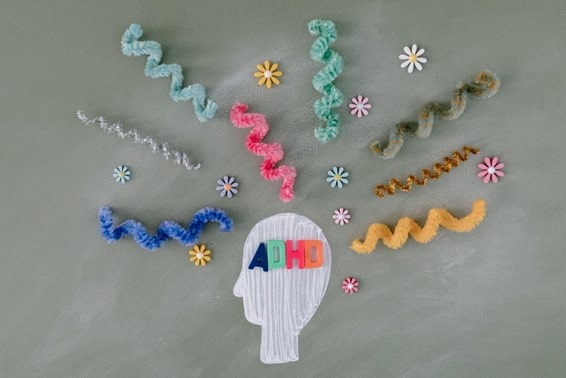ADHD and Exercise: The Power of Exercise in Managing ADHD

I have a friend who can’t seem to sit still for more than a few minutes and when he manages to sit through a project, he forgets to do other things – yes, even eating. I asked him once about his behavior and he told me that he felt his thoughts throwing a non-stop party in his head and it made it all chaotic. That’s what the mind of an ADHD person feels like all the time, he told me.
With ADHD, your mind feels like a chaotic party, where the focus is fleeting, and sitting still is a challenge as tough as herding cats. But, here comes the saver – exercise. Now, I would be the last person to preach the benefits of exercise as someone who runs away the moment the word “exercise” is uttered in my vicinity, but I can’t deny the perks of exercise for ADHD.
Today, I’m here to bring you the dynamic duo – ADHD and exercise. There’s a synergy that’s more powerful than you might imagine when an ADHD brain and exercise come together. So, let’s explore the connection between ADHD and exercise and discover how you can become more focused and balanced with exercise.
ADHD: Attention Deficit Hyperactivity Disorder

ADHD or Attention Deficit Hyperactivity Disorder is a condition where you experience bouts of inattentiveness, hyperactivity, and impulsivity. Imagine your brain hosting a bustling carnival, where your thoughts ride like a roller coaster, attention wanders in and out, and your focus seems to be missing in the haunted house.
ADHD can impact different aspects of your life – from social activities to family life and from focus to productivity. Common symptoms of ADHD can be;
- Inattentiveness
- Constant fidgeting
- Being forgetful
- Lack of focus
- Poor organization
- Hyperactivity
- Being easily distracted
- Being impatient
The Link Between ADHD and Exercise: Does it Exist?
When you exercise, your body releases chemicals – dopamine and norepinephrine. These chemicals are our brain’s natural mood stabilizers and attention boosters. Attention, the elusive friend, gets a friendly push from exercise. Regular physical activity can sharpen your focus and put distractions in the back of your mind. When you exercise, it can be akin to a pair of noise-canceling headphones in the middle of a bustling market.
Not just distractions, but exercise can also help with impulse control. Exercise can help your brain learn to pause before impulsivity takes over, making it easier for you to be more in control of your actions.
ADHD often comes with stress and exercise, here, becomes the life-saver that fights the stress right off the bat. Exercise, when you look at it, isn’t just about burning calories, it’s about releasing the tension that stress puts on your shoulders.
Have you ever experienced that post-exercise bliss where you felt relaxed and energized at the same time? Well, that’s the magic of exercise. Exercising gives you an energy boost without experiencing the jittery side effects of caffeine and sugar.
Executive dysfunction in ADHD can cause memory issues, attention problems, and even disorganized thinking. Studies suggest that exercising can activate the regions of the brain that are responsible for executive function, improving ADHD symptoms.
Another common symptom of ADHD is hyperactivity and it can manifest differently in children and adults with ADHD. In children, hyperactivity can be fidgeting, while in adults, it can be restlessness. In both circumstances, exercise can help control hyperactivity.
Even with emotional dysregulation in ADHD, exercise can help as regular physical activity releases endorphins that can improve mood and lower symptoms of anxiety and depression.
One of the challenges people with ADHD face is getting proper sleep. Exercise can save the day here too! When you exercise regularly, it can help you fall asleep faster and ensure a deeper and restful sleep as well.
Can Exercise Help Other ADHD-Related Issues?
Exercise is a versatile activity that can be tailored to meet and address different challenges that come with ADHD. For one, let’s talk about anxiety. Anxiety and ADHD often come hand in hand. Exercise, here, can be the umpire; the peacekeeper. When you exercise, it releases a flood of endorphins that can wash away all the anxious feelings and bring calm to your mind.
Exercise can also help you improve your cognitive processes. It enhances skills like planning, organizing, and decision-making. It’s not just about moving your body; it’s about giving your brain a workout of executive functions.
For adults with ADHD, moving smoothly in social situations can feel like a maze. Here we welcome exercising. Whether it’s joining a group class or hitting the basketball court, exercise provides a natural setting to practice teamwork, communication, and the art of sharing space with others.
In ADHD, emotions can be experienced like unpredictable twists and turns. Exercise steps in as a tool of emotion regulation, helping you control mood swings and create a more predictable emotional expression. It’s not about suppressing emotions; it’s about giving them a healthier outlet to express themselves.
Moreover, when we talk about ADHD, we can’t leave energy behind. Balancing energy levels in ADHD can be challenging but here exercise can work wonders. If you ever feel full of energy, then you can find the right tempo of movement that helps you release the excess energy or make you feel energized without overwhelming you.
Is Exercise An Alternative For ADHD Treatment?
When we talk about managing ADHD, exercise comes with many benefits. But the question remains: can exercise be an alternative to traditional ADHD treatments?
Exercise is more of a dynamic tool. How? Well, you can picture exercise being the sidekick to the heavyweight of ADHD treatments such as medication and therapy. Separate, they work, but together, they become the powerhouse team; the dynamic duo.
Exercise complements traditional ADHD treatments. While medication may handle the biological and physiological aspects of ADHD, exercise steps in as the mood enhancer, focus booster, and stress reliever; the psychological aspects of ADHD.
Not every ADHD treatment can offer support and help to every ADHD adult. Exercise steps in here to create a routine that suits your needs and preferences. Whether it’s yoga, sports, or solo workouts, there’s a variety of options to cater to different symptoms and needs.
Can ADHD Make it Challenging to Exercise?
Well, yes. Here, picture this; you’re all set for a workout, but suddenly, your mind decides to explore and pay attention to the distractions in your mind. The TV, your phone, that interesting-looking rock on the ground—everything becomes a diversion. Staying focused on the exercise task at hand can be a real challenge.
At some point, procrastination might even sneak in, convincing you that maybe tomorrow is a better day for exercise. And where there is procrastination, there is impulsivity too. In the context of exercise, this can mean jumping from one activity to another without a solid plan. The impulsive urge to switch from running to yoga to weightlifting in a single session can make consistency a bit of a puzzle.
For an ADHD brain, a routine can be monotonous. The repetition of the same exercises or the monotony of a fixed workout schedule can lead to boredom. And let’s face it, when boredom strikes, the motivation can take a nosedive.
If we’re talking about boredom, then let’s talk about time as well. Time can be a tricky concept when ADHD is in the picture. The perception of time may be distorted, leading to either rushing through exercises or feeling like an eternity has passed when it’s only been a few minutes.
And let’s face it, not every exercise routine is for you. The challenge lies in finding the activities that resonate with you and your needs. If you can’t find the right tempo, the right energy, and the right exercise, then exercise makes ADHD worse.
Tips to Effectively Exercise With ADHD

If you want to exercise well with an ADHD mind and body, then here are some tips for you;
1. Mix Things Up
The same exercises day in and day out might become monotonous, which can be difficult to overcome with ADHD. So, embrace a variety of exercises to keep things interesting. From cycling to dancing, mix it up a little. It will not only prevent boredom but will help you tap into different aspects of your brain, enhancing the benefits of exercise.
2. Set Realistic Goals
We all love setting goals for ourselves, especially when it comes to exercising. But we forget to make our goals realistic. This time, set realistic, achievable goals that align with your abilities and schedule. Whether it’s aiming for a certain number of workouts per week or gradually increasing exercise duration, small and realistic goals can bring a sense of accomplishment.
3. Don’t Go Solo
You don’t have to exercise alone. That could be boring. So, invite friends, join group glasses, or find a workout buddy. This one social element can add to your accountability and can also help transform the exercise routine into an adventure, making it more enjoyable.
4. Manage Time
ADHD time warp is real, but don’t fret. Creating a dynamic routine can help you manage time. Try to schedule specific workout times and stick to them. Use alarms or reminders to signal the start of your exercise session. This will help you keep the time distortion at bay.
5. Try HIIT
For your ADHD brain, short but high-intensity training can be more engaging than long sessions. You can try HIIT workouts here. The short but intense activity followed by rest periods can keep things interesting and has been proven to be an effective exercise activity for ADHD.
6. Bring in Mindfulness
Exercise isn’t just about moving your body, it’s also about engaging your mind. Mental exercises for ADHD adults also count as exercise. So, try to incorporate mindfulness practices like yoga or tai chi into your exercise routine. These activities not only help build your strength but also help you mentally focus and induce calm, soothing your ADHD mind.
7. Create Rituals
You can also create pre-exercise rituals to help signal to your brain that it’s time to exercise. Whether it’s listening to music, stretching, or sipping on some protein shake, these kinds of rituals can act as cues to your brain as a transition signal, making exercising less of a chore and more enjoyable.
8. Listen to Your Body
Your body is your workout guide, so listen to it. Pay attention to how it feels during and after exercise. If something doesn’t feel right, then adjust your exercise routine accordingly. If you need to rest, then rest; don’t overwork yourself.
Wrapping Up…
In the dynamic dance between ADHD and exercise, there’s a lot that brings to the table other than physical fitness. Exercise isn’t just about moving your body, it’s a transformative experience for the mind and the body, offering many benefits for an ADHD brain. There’s one thing clear; exercise isn’t just a remedy for ADHD; it’s a lifestyle and a source of power that can unleash a world of wonders.
From inattentiveness to impulse control, exercise comes as a versatile tool, helping us address various ADHD-related challenges. While exercise can help manage ADHD, it doesn’t have to be the only treatment option. Combining exercise with traditional ADHD treatments makes it a holistic approach, if not an alternative treatment.
So, as you tie your shoes and sip that protein shake, remember, you’re not just exercising; you’re engaging in a smooth movement that resonates with your ADHD beats. Exercise and ADHD are about adding balance and well-being – one step and one movement at a time.
I hope this article helped you understand the fascinating connection between ADHD and exercise. Let me know what you think about this unique entanglement between exercising and an ADHD brain in the comments below.
Take Care!





















